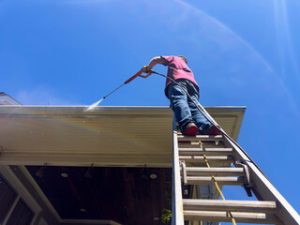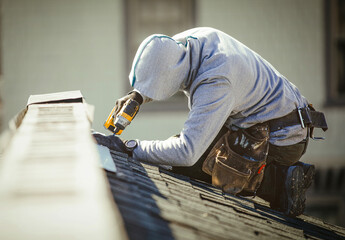Maintaining a strong, durable roof is essential for protecting your home from the elements. While major roof repairs should always be handled by professionals, there are several tasks that homeowners can do themselves to keep their roofs in excellent condition. By performing regular maintenance and making small fixes, you can extend the life of your roof and prevent costly damage in the future. Here are some practical DIY roofing tips that every homeowner should know.
1. Inspect Your Roof Regularly
Routine inspections are the first step in maintaining your roof. Check your roof at least twice a year—typically in the spring and fall—to identify potential problems before they worsen. Look for missing or damaged shingles, rusted flashing, loose nails, and signs of wear. Binoculars can be useful for viewing hard-to-reach areas from the ground, reducing the need to climb onto the roof unnecessarily.

2. Keep Gutters Clean and Clear
Clogged gutters can lead to water buildup, which can damage shingles and cause leaks. Remove leaves, branches, and debris from your gutters regularly, especially after storms or during the fall when leaves are abundant. Make sure downspouts are clear and directing water away from the foundation to prevent structural damage.
3. Trim Overhanging Tree Branches
Overhanging branches can scrape against shingles, remove protective granules, and even puncture the roof during strong winds. Trim any tree limbs that extend over your roof to prevent physical damage and reduce the amount of debris that falls onto your roof and into your gutters.
4. Check for Algae and Moss Growth
Algae and moss not only affect the appearance of your roof but can also cause shingles to deteriorate over time. If you notice green patches or black streaks, gently clean the affected areas using a mixture of water and mild soap, or apply a roof-safe cleaning solution. Avoid using high-pressure washers, as they can damage shingles and reduce their lifespan.
5. Replace Damaged or Missing Shingles
If you spot a few missing or cracked shingles, you can replace them yourself with basic tools. Carefully remove the damaged shingles, apply roofing cement, and secure the new shingles in place with roofing nails. Always wear appropriate safety gear and work on a dry day to avoid slipping hazards.
6. Seal Small Leaks Promptly
Minor leaks can quickly turn into major problems if ignored. If you notice water stains on your ceiling or attic, trace the source of the leak. In many cases, leaks occur around chimneys, vents, or flashing. Use roofing cement or a waterproof sealant to patch small gaps. For extensive leaks, call a professional immediately.
7. Ensure Proper Ventilation
Poor attic ventilation can cause moisture buildup, leading to mold growth and roof deterioration. Check your attic vents to ensure they are not blocked by insulation or debris. Proper ventilation helps regulate temperature, prevents ice dams in winter, and prolongs roof life.
8. Apply Roof Coating for Extra Protection
Roof coatings can help protect shingles from UV rays and harsh weather, extending the roof’s lifespan. Choose a product designed for your roofing material and apply it according to the manufacturer’s instructions. This extra layer of protection can reduce heat absorption and improve energy efficiency.
9. Practice Safety First
When performing any roofing task, safety should always come first. Use a sturdy ladder, wear non-slip shoes, and consider using a safety harness if you need to climb onto the roof. Avoid working in wet or windy conditions, and never attempt repairs that seem beyond your ability—leave those to a professional.
10. Schedule Professional Inspections When Needed
While DIY maintenance can go a long way, it’s important to have your roof professionally inspected every few years. A roofing expert can spot hidden issues and recommend necessary repairs to keep your home safe and secure.
